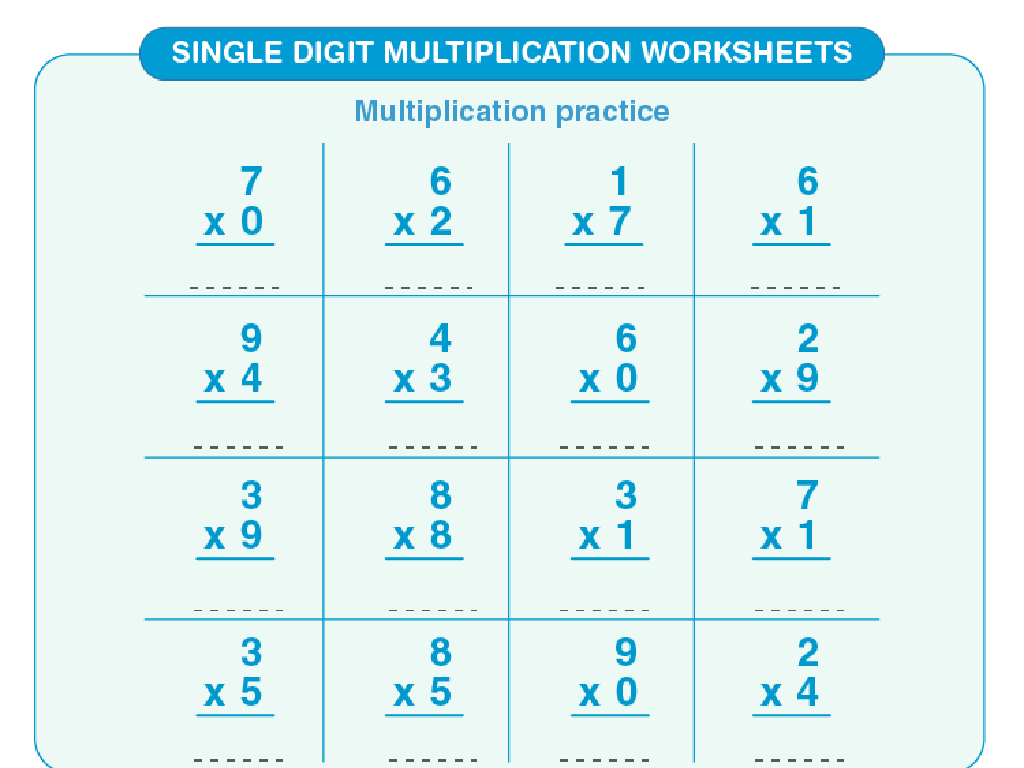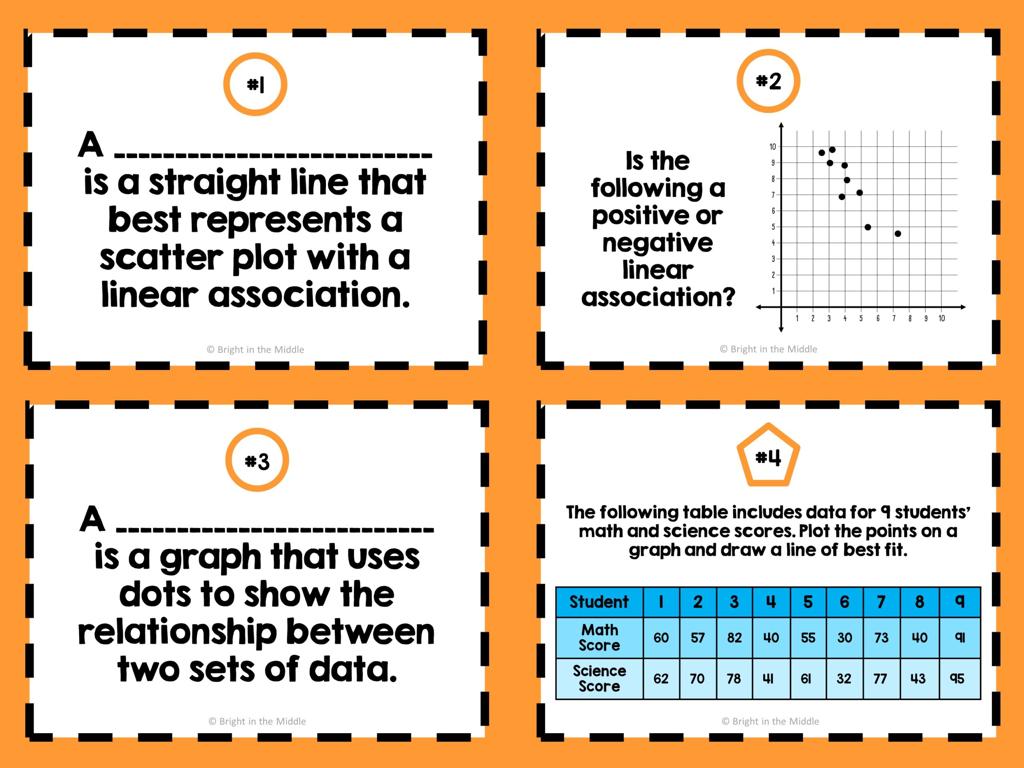Angles As Fractions Of A Circle
Subject: Math
Grade: Fourth grade
Topic: Angle Measurement
Please LOG IN to download the presentation. Access is available to registered users only.
View More Content
Angles as Fractions of a Circle
– Angles in daily life
– Clock hands form angles; slices of pizza are angles too.
– Review: What’s an angle?
– Where two lines meet, they form an angle.
– Angles as circle fractions
– A circle is 360°, so a right angle is 1/4 of a circle.
– Measuring angles with fractions
– If a circle is a pie, each slice’s angle is a piece of the pie.
|
This slide introduces the concept of angles as fractions of a circle, which is a part of angle measurement. Begin by discussing how angles appear in everyday life, such as the hands on a clock or slices of pizza, to make the concept relatable. Review the basic definition of an angle as the space where two lines meet. Explain that a full circle is 360 degrees and that angles can be expressed as parts of a circle, much like slices of a pie. This will help students visualize and understand how to measure angles using fractions. Encourage students to think of other examples where they encounter angles in their daily lives.
Understanding Circles and Angles
– A circle: round shape, no corners
– Key parts: center, radius, circumference
– Center: middle point. Radius: line from center to edge. Circumference: distance around circle.
– A circle’s total angle: 360 degrees
– Think of a clock: full rotation is 360 degrees.
– Angles as circle fractions
– If a circle is a pie, angles are pieces. What fraction of the pie is each piece?
|
This slide introduces the basic concept of a circle and its relationship to angles. Emphasize that a circle is a perfectly round shape, which means it doesn’t have any corners or edges like squares or triangles do. Discuss the important parts of a circle: the center is the exact middle, the radius is any straight line from the center to the edge, and the circumference is the total distance around the circle. Highlight that the total angle measure in any circle is 360 degrees, which can be related to a clock’s full rotation. Finally, explain that angles can be thought of as fractions of a circle, similar to how slices are fractions of a pie, and this will lead into understanding how to measure angles as parts of a circle.
Dividing the Circle into Angles
– A circle is like a pie
– Imagine cutting a pie into equal parts
– Each slice represents a fraction
– If a circle is cut into 4 pieces, each piece is 1/4 of the circle
– Fractions show angle sizes
– Larger slices mean larger fractions and angles
– Angles are parts of a circle
|
This slide introduces the concept of dividing a circle into smaller parts, akin to slicing a pie, to help students visualize angles as fractions of a circle. Each slice or section of the circle represents a fraction, and the size of the fraction corresponds to the size of the angle. For example, if a circle is divided into four equal parts, each part is a quarter of the circle, representing a 90-degree angle. Encourage students to think about different ways to divide a circle and how this relates to both fractions and angles. Use real-life examples such as pie slices or pizza pieces to make the concept more relatable and easier to grasp.
Fractions of a Circle: Understanding Angles
– Half circle equals 180 degrees
– Like a straight line across a pizza
– Quarter circle equals 90 degrees
– Like the corner of a square or rectangle
– Eighth circle equals 45 degrees
– Smaller than a right angle, like a slice of cheese
|
This slide is aimed at helping students visualize angles as fractions of a circle, which is a fundamental concept in understanding angle measurement. Relate the fractions of a circle to everyday objects: half a circle is like a straight line that cuts a pizza in half, representing 180 degrees. A quarter of a circle is like the corner of a square or rectangle, which is a right angle at 90 degrees. An eighth of a circle, which is an acute angle, can be visualized as something smaller than the corner of a square, like a slice of cheese, representing 45 degrees. Encourage students to draw these angles and relate them to fractions of a circle during activities to reinforce the concept.
Understanding Angles as Fractions of a Circle
– Angles are pieces of a circle
– Imagine cutting a pie into slices; each slice is an angle of the pie.
– Angle size shows how big the piece is
– A bigger slice means a larger angle, just like a bigger piece of cake!
– Fractions describe angle sizes
– If a circle is cut into 4 equal slices, each angle is 1/4th of the circle.
– Practice with angle fractions
|
This slide introduces the concept of angles as fractions of a circle, which is a fundamental part of understanding angle measurement. Start by explaining that every angle can be seen as a slice of a circular pie, and the size of the angle is like the size of the pie slice. Use visual aids like a pie or a clock to show how angles are parts of a circle. Then, explain how fractions are used to describe these sizes, for example, a quarter of a pie is like a 90-degree angle, which is 1/4th of a circle. Encourage students to think of a circle as a whole, and angles as parts of that whole, represented by fractions. To reinforce learning, have students practice by drawing circles, dividing them into equal parts, and identifying the fraction of the circle each part represents.
Measuring Angles with a Protractor
– Protractors measure angle size
– A protractor has a curved edge marked in degrees to measure angles.
– Degrees show circle fractions
– Each degree on a protractor represents a fraction of a full circle, which has 360 degrees.
– Practice measuring angles
– We’ll use a protractor to find the size of different angles in a fun activity.
– Understanding angle measurements
|
This slide introduces the concept of measuring angles using a protractor, emphasizing that the degrees indicate the fraction of the circle that the angle represents. Begin by explaining what a protractor is and how it is used. Show a visual example of a protractor and an angle being measured. Explain that a full circle is 360 degrees, so an angle’s degree measure tells us what part of a circle it is. For the activity, provide various angles for students to measure with their protractors. Encourage them to think of the angle in terms of slices of a pie or pizza to visualize the concept of fractions of a circle. This will help solidify their understanding of angle measurements as fractions of a circle.
Angles in Everyday Life
– Clock hands form angles
– The angle between the hands shows different times.
– Pizza slices as circle angles
– Each slice is a fraction of the pizza circle.
– Playground equipment angles
– Slides and swings have various angle types.
– Understanding angles visually
|
This slide aims to help students recognize angles in real-world objects, enhancing their understanding of angles as fractions of a circle. Use a clock to demonstrate how the hands form different angles at different times, representing fractions of the 12-hour cycle. Explain that a pizza can be divided into equal slices, each representing a fraction of the whole pizza, and thus a fraction of a circle. Show pictures of playground equipment like slides, swings, and climbing frames to identify different angles. Encourage students to observe and discuss angles they encounter in their daily lives, reinforcing the concept that angles are everywhere.
Class Activity: Create Your Own Angle Art!
– Use a protractor to draw angles
– Place the protractor’s center on your paper’s point, and draw angles of different sizes.
– Combine angles to make a picture
– Use your imagination to put together the angles into a fun picture, like a house or a sun.
– Share your angle art with the class
– Present your artwork and explain the angles you used to your classmates.
|
This activity is designed to help students understand angles as fractions of a circle in a fun and interactive way. By using a protractor, students will practice measuring and drawing angles, reinforcing their understanding of angle measurement. Encourage creativity as they combine different angles to create a unique piece of art. Possible variations of the activity could include: creating specific themed art (e.g., space, underwater), using colored pencils to enhance their artwork, or even incorporating real-world objects to form angles. After completion, students will share their angle art with the class, explaining the types of angles used, which promotes public speaking and reinforces their learning.
Angles in Everyday Objects: Homework
– Review: Angles as circle fractions
– Homework: Find & measure 3 angles
– Look for objects like book corners or doorways
– Use a protractor for accuracy
– Remember, the full circle is 360 degrees
– Share your angle discoveries
– Be prepared to discuss how you measured
|
This slide wraps up the lesson on angles as fractions of a circle and sets up the homework assignment. Students are tasked with finding everyday objects that have angles, such as the corner of a book or the angle between a door and its frame, and using a protractor to measure them. This practical activity reinforces the concept that angles are all around us and provides hands-on experience with measurement tools. Encourage students to be precise and to note if the angles are acute, obtuse, or right angles. Remind them that a full circle is 360 degrees, so they can think about what fraction of a circle their measured angle might represent. Tomorrow, students will share their findings, fostering a discussion on the variety of angles found in everyday life and their measurements.






